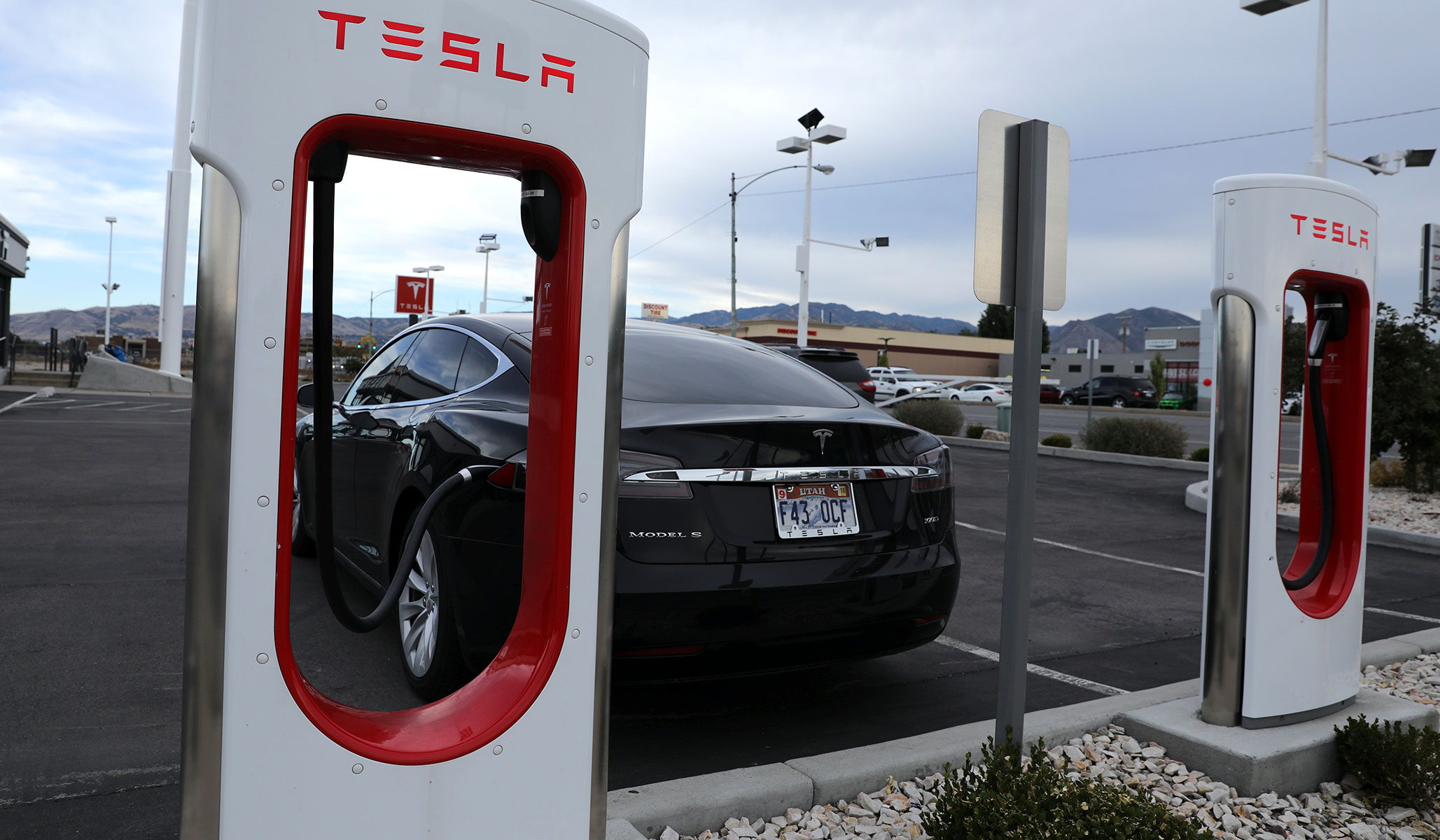


Sales of electric vehicles (EVs) are accelerating in the U.S., reports the Financial Times:
It took nearly eight years to sell the first 1mn battery-powered cars, trucks and vans in the US, a milestone hit in 2018. The 2mn mark took roughly 32 months, and the third million took approximately 15 months. The accelerating pace brought the 4 millionth sale after just 10 months.
To get that in proportion, the U.S. should see new car sales (of all classes) of around 15 million this year.
The FT:
Discounts at Tesla and Ford have contributed to rising sales. Tesla delivered a record 466,000 cars between April and June after cutting prices in the US in January by up to $13,000 across models. This prompted Ford to price its Mustang Mach-E between $46,000 and $64,000. Tesla then lowered prices again in March, decreasing the starting price of the Model S by 5 per cent to about $90,000 and the cheapest Model X by 9 per cent to about $100,000.
Tax credits have also boosted EV sales, although it is unclear by how much…
So, all good?
The auto industry is beginning to crank out more electric vehicles (EVs) to challenge Tesla, but there’s one big problem: not enough buyers.
Why it matters: The growing mismatch between EV supply and demand is a sign that even though consumers are showing more interest in EVs, they’re still wary about purchasing one because of price or charging concerns.
So sales are ramping up, but not by enough to deal with the increase in production. That mismatch may sort itself out after a while, and inventories can build up of any type of car from time to time. But what may make this inventory build-up more ominous than usual is that many of these cars are being manufactured not because of current consumer demand (Tesla is one obvious exception to this) but out of the hope that sooner or later, increasingly heavy-handed government intervention in the auto market will create demand. That might be correct, but, for automakers, it is a very different attitude to reading the market in the way that they are used to.
Meanwhile, Axios reports, “A Cox survey found that 51% of consumers are now considering either a new or used EV, up from 38% in 2021,” so there’s that.
Axios:
The nationwide supply of EVs in stock has swelled nearly 350% this year, to more than 92,000 units. That’s a 92-day supply — roughly three months’ worth of EVs, and nearly twice the industry average. For comparison, dealers have a relatively low 54 days’ worth of gasoline-powered vehicles in inventory as they rebound from pandemic-related supply chain interruptions. In normal times, there’s usually a 70-day supply.
Cox’s inventory data doesn’t include Tesla, which sells direct to consumers.
It’s interesting looking at some of the details set out in the Axios report. A number of the models piling up are ineligible for the tax credit, either because they are too expensive or because they are imported, suggesting a fairly high level of price sensitivity. That is worth watching given that, according to the central planners directing the transition to EVs, the “market” for them is meant to broaden out to include large numbers of less wealthy buyers before long.
But things are looking better for hybrids.
Axios:
Hybrid vehicles have much lower inventory levels, supporting Toyota’s argument that consumers want a stepping stone to fully electric cars. There’s a relatively tight 44-day supply of hybrids industrywide, according to Cox. Toyotas are in particularly short supply — under 30 days each for Prius and RAV4 hybrids and plug-in hybrids.
It’s almost as if Akio Toyoda, the former CEO (now chairman) of Toyota knows something about the way that consumers think.
I wrote a bit about the position that he has taken here and here. It led to him being edged out as CEO, and an attempt by some reckless “socially responsible” investors such as the California Public Employees’ Retirement System (CalPERS) and New York City’s public-worker pension funds (supported by Glass Lewis, half the proxy advisory’s de facto duopoly) to force him from Toyota’s board. Fortunately, they, and some European allies, were unsuccessful.
To put it briefly, Toyoda believes that consumers should be given a choice of auto technologies, and has his doubts (doubts shared by the chairman of India’s largest automaker, someone else who may know a thing or two about cars) about whether betting (almost) exclusively on one technology (battery electric vehicles), and one that, in the words of the CEO of Stellantis, has been picked by politicians, is . . . wise.
Meanwhile, as I noted the other day (quoting a story from the New York Times), the Alliance for Automotive Innovation, which represents automakers responsible for around 97 percent of car sales in the U.S., is complaining about the pace of the transition to EVs envisaged by the EPA’s proposed new regulations. It does not believe that the agency’s targets can be met “without substantially increasing the cost of vehicles, reducing consumer choice, and disadvantaging major portions of the United States population and territory.”
They cannot.
As noted above, demand for EVs is accelerating, and not too much should be made of what may be a temporary blip in inventories. Nevertheless, it’s easy to see how this could be an early warning of what is to come when government tries to dictate the sort of car that consumers should buy, and consumers disagree.
Interestingly, while Toyota’s hybrids are in short supply, it had 101 days’ worth of inventories of its only fully electric model, the Bz4X. Admittedly BEVs have not been a focus of Toyota’s, but still. . . .
